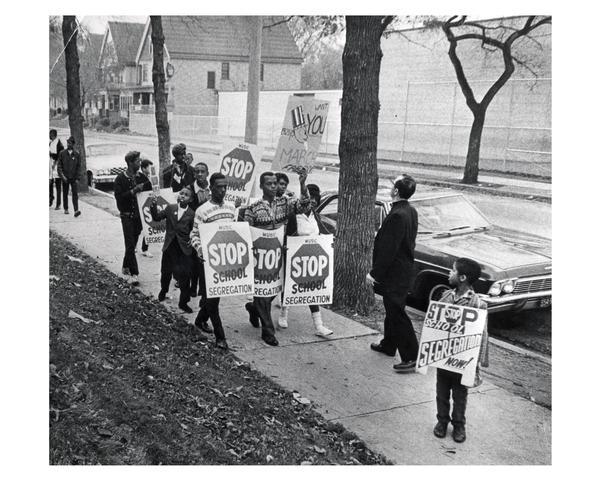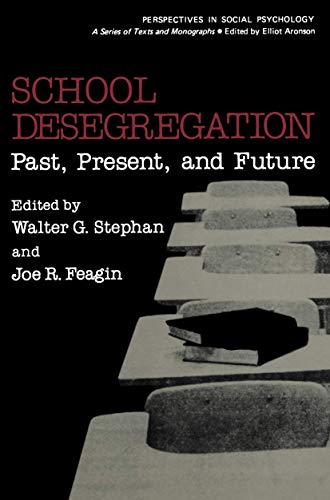More School Desegregation Orders Expected To End: A Legal Analysis

Table of Contents
The Legal Basis for School Desegregation Orders
The fight for school desegregation has been a long and arduous journey, marked by landmark legal battles and significant legislative changes. The cornerstone of this movement remains Brown v. Board of Education (1954), the Supreme Court case that declared state laws establishing separate public schools for Black and white students to be unconstitutional. This monumental decision, however, was just the beginning. The dismantling of segregation required further legal action, leading to the implementation of various legal mechanisms to enforce desegregation.
These mechanisms primarily involve court orders and consent decrees. Court orders are issued by judges to mandate specific actions by school districts to achieve desegregation, while consent decrees are agreements negotiated between school districts and the Department of Justice or plaintiffs to address desegregation issues.
- Key legislation relevant to school desegregation: The Civil Rights Act of 1964, the Elementary and Secondary Education Act of 1965, and the Equal Educational Opportunities Act of 1974 all play crucial roles in supporting desegregation efforts.
- Types of remedies imposed by courts to achieve desegregation: These include busing, redrawing school attendance zones, magnet school programs, and the allocation of resources to ensure equitable distribution across schools.
- Examples of successful desegregation initiatives: Many school districts implemented successful programs combining busing with investments in school facilities and teacher training to achieve meaningful integration. These demonstrate the effectiveness of comprehensive approaches.
The Criteria for Termination of School Desegregation Orders
Terminating a school desegregation order is not a simple process. Courts apply rigorous legal standards to determine whether a school district has genuinely achieved desegregation and is no longer requiring court supervision. The burden of proof lies with the school district to demonstrate that it has fulfilled its desegregation obligations.
- Factors courts consider: Courts evaluate various factors, including the racial balance within schools, equal access to resources (teachers, facilities, programs), and the elimination of any vestiges of past discrimination. This assessment often involves detailed statistical analysis and expert testimony.
- The role of expert testimony and statistical analysis: These tools are critical in demonstrating whether apparent racial imbalances are statistically significant or simply due to chance. Sophisticated statistical models are frequently employed.
- The concept of "unitary status": A school district achieves "unitary status" when a court determines it has eliminated the vestiges of past segregation and is operating a unitary, non-discriminatory school system. This is a crucial prerequisite for the termination of desegregation orders.
The Potential Impact of Ending School Desegregation Orders
The termination of school desegregation orders carries significant implications. A primary concern is the potential for re-segregation, a return to racially isolated schools that could exacerbate existing educational inequalities.
- Potential increase in racial segregation in schools: Lifting court orders could lead to a resurgence of segregation, as schools revert to patterns based on residential segregation and other factors.
- Impact on educational resources and opportunities for minority students: Without court oversight, disparities in funding, teacher quality, and access to advanced programs may resurface, disproportionately affecting minority students.
- The role of community engagement and proactive measures: Ongoing community engagement and proactive measures are crucial to prevent re-segregation and maintain integrated schools.
Future Legal Challenges and Strategies for Maintaining Integration
Ending school desegregation orders doesn't necessarily mark the end of legal challenges. The potential for litigation remains, and various strategies exist to promote school integration even without court supervision.
- Potential legal avenues for challenging the termination of desegregation orders: Legal challenges could be mounted if it's demonstrated that a district hasn't genuinely achieved unitary status or if new evidence of discriminatory practices emerges.
- Strategies for promoting diversity and inclusion in schools: Strategies such as magnet schools, open enrollment policies, and targeted investments in under-resourced schools can foster diversity and inclusion.
- The importance of continued monitoring and evaluation of school district policies: Ongoing monitoring and evaluation are necessary to ensure that school districts remain committed to equitable educational opportunities for all students.
Conclusion: The Ongoing Fight for School Desegregation – Looking Ahead
The ending of school desegregation orders represents a significant turning point in the ongoing struggle for educational equity. While the legal basis for these orders is clear, the potential for re-segregation and the perpetuation of educational inequalities remains a serious concern. The analysis presented highlights the need for vigilance and proactive measures to ensure that all students, regardless of race or ethnicity, have equal access to a quality education. Stay informed about upcoming changes to school desegregation orders and advocate for policies that ensure equal educational opportunities for all children. Organizations like the NAACP Legal Defense and Educational Fund continue to champion these efforts, and their work should be supported. The fight for equitable school desegregation continues, and it demands our sustained attention and commitment.

Featured Posts
-
 Justice Department Ends School Desegregation Order What This Means For Schools
May 03, 2025
Justice Department Ends School Desegregation Order What This Means For Schools
May 03, 2025 -
 Low Mental Health Insurance Claims Exploring The Barriers To Care
May 03, 2025
Low Mental Health Insurance Claims Exploring The Barriers To Care
May 03, 2025 -
 Hans Resignation South Koreas Prime Minister Eyes Presidency
May 03, 2025
Hans Resignation South Koreas Prime Minister Eyes Presidency
May 03, 2025 -
 Finding The Perfect Place In The Sun Location Location Location
May 03, 2025
Finding The Perfect Place In The Sun Location Location Location
May 03, 2025 -
 Justice Departments Decision The Future Of School Desegregation
May 03, 2025
Justice Departments Decision The Future Of School Desegregation
May 03, 2025
Latest Posts
-
 El Ciclista Suizo Fabio Christen Gana La Vuelta A Murcia
May 04, 2025
El Ciclista Suizo Fabio Christen Gana La Vuelta A Murcia
May 04, 2025 -
 45 Vuelta Ciclista A Murcia Christen Se Impone
May 04, 2025
45 Vuelta Ciclista A Murcia Christen Se Impone
May 04, 2025 -
 Navigating The Belgian Merchant Market Financing A 270 M Wh Bess Project
May 04, 2025
Navigating The Belgian Merchant Market Financing A 270 M Wh Bess Project
May 04, 2025 -
 Belgium Securing Funding For A 270 M Wh Battery Energy Storage System
May 04, 2025
Belgium Securing Funding For A 270 M Wh Battery Energy Storage System
May 04, 2025 -
 Lion Storage Completes Financing For 1 4 G Wh Bess Project In Netherlands
May 04, 2025
Lion Storage Completes Financing For 1 4 G Wh Bess Project In Netherlands
May 04, 2025
